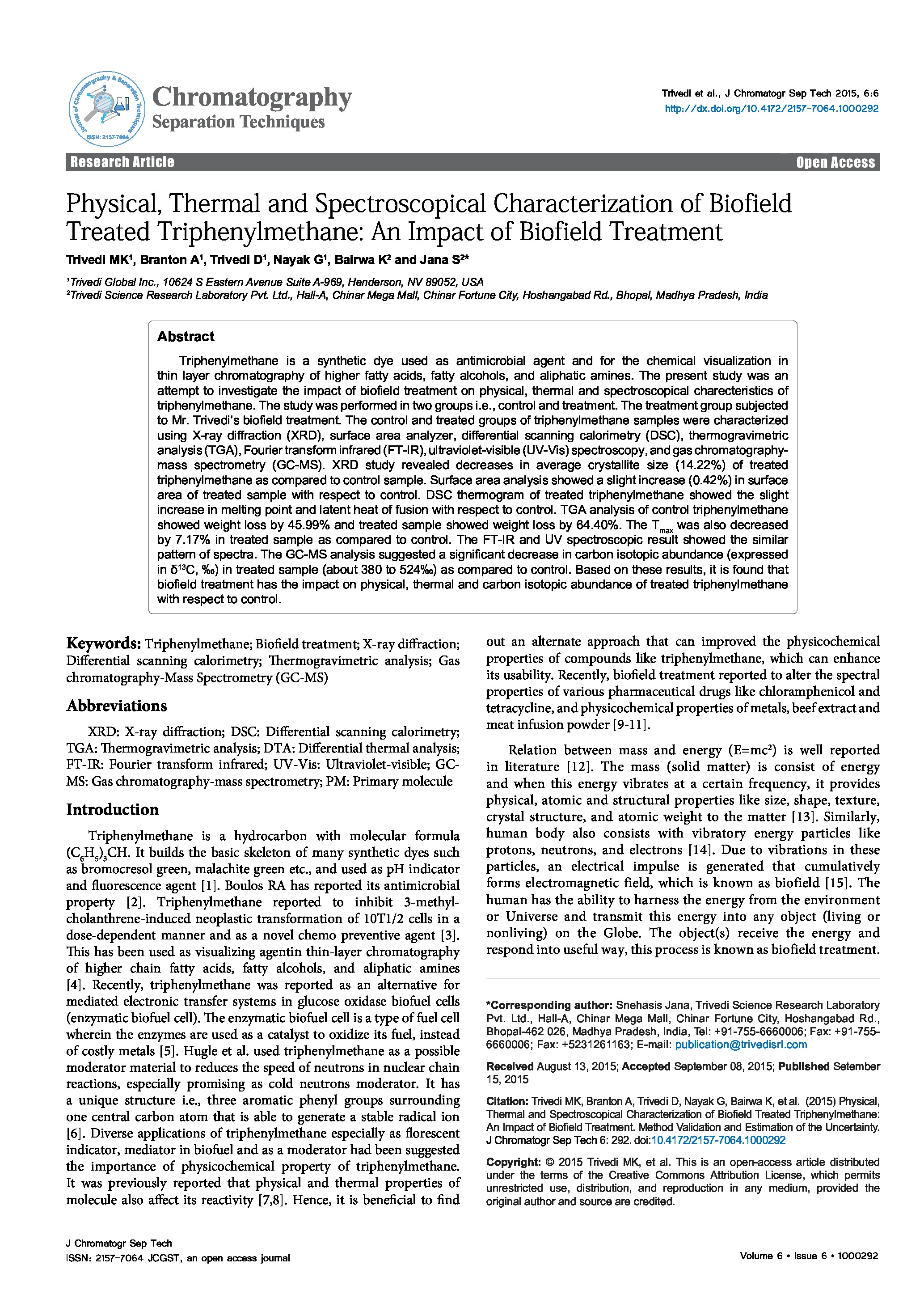Date of upload:
23.11.2016
Co-author:
Mahendra Kumar Trivedi, Rama Mohan Tallapragada, Alice Branton, Dahryn Trivedi, Rakesh Kumar Mishra, Snehasis Jana
Abstract:
Study background: 2,4-Dihydroxybenzophenone (DHBP) is an organic compound used for the synthesis of pharmaceutical agents. The objective of this study was to investigate the influence of biofield energy treatment on the physical, thermal and spectral properties of DHBP. The study was performed in two groups (control and treated). The control group remained as untreated, and the treated group received Mr. Trivedi’s biofield energy treatment.
Methods: The control and treated DHBP samples were further characterized by X-ray diffraction (XRD), differential scanning calorimetry (DSC), thermogravimetric analysis (TGA), laser particle size analyser, surface area analyser, Fourier transform infrared (FT-IR) spectroscopy, and ultra violet-visible spectroscopy (UV-vis) analysis.
Results: The XRD study indicated a slight decrease in the volume of the unit cell and molecular weight of treated DHBP as compared to the control sample. However, XRD study revealed an increase in average crystallite size of the treated DHBP by 32.73% as compared to the control sample. The DSC characterization showed no significant change in the melting temperature of treated sample. The latent heat of fusion of the treated DHBP was substantially increased by 11.67% as compared to the control. However, TGA analysis showed a decrease in the maximum thermal decomposition temperature (Tmax) of the treated DHBP (257.66ºC) as compared to the control sample (260.93ºC). The particle size analysis showed a substantial increase in particle size (d50 and d99) of the treated DHBP by 41% and 15.8% as compared to the control sample. Additionally, the surface area analysis showed a decrease in surface area by 9.5% in the treated DHBP, which was supported by the particle size results. Nevertheless, FT-IR analysis showed a downward shift of methyl group stretch (2885→2835 cm-1) in the treated sample as compared to the control. The UV analysis showed a blue shift of absorption peak 323→318 nm in the treated sample (T1) as compared to the control.
Conclusion: Altogether, the results showed significant changes in the physical, thermal and spectral properties of treated DHBP as compared to the control.




